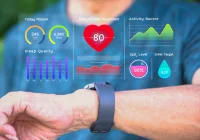Despite widespread digital advances in healthcare, medication management in European hospitals remains a largely manual and fragmented process. This inefficiency heightens the risk of medication errors, reduces operational resilience and undermines patient safety. With up to 80 million serious medication errors annually across Europe, the digitalisation of medication pathways is now an urgent priority. To tackle this issue, EU policy initiatives and funding programmes are converging to support strategic investments in hospital digital infrastructure. Evidence shows that digitalisation can reduce waste, improve inventory visibility and boost clinical safety while offering a strong return on investment.
Tackling Inefficiencies and Preventable Harm
Manual systems dominate the medication pathway in most European hospitals, from procurement and storage to prescribing and administration. These workflows lack real-time monitoring and integration, exposing patients and healthcare workers to unnecessary risks. Errors in data entry, expired stock remaining unnoticed and disconnected systems that isolate pharmacy inventories from ward-level activities continue to cause harm. In oncology and intensive care units, where precision is critical, these gaps are particularly dangerous. The absence of automation increases the psychological toll on staff involved in adverse events. Nurses, pharmacists and physicians experience high levels of stress and compassion fatigue, with many requiring time off work. As data from multiple surveys show, digital systems such as e-prescriptions, barcode verification, automated dispensing and inventory tracking are underutilised in most EU hospitals.
Strategic Policy Alignment and Digital Readiness
Recent policy actions at EU level, including the European Health Data Space and the Critical Medicines Act, have placed new expectations on hospitals. These include the ability to share interoperable data on medication stocks and ensure the traceability of prescriptions and dispensing events. Hospitals are also expected to link with national and EU-level platforms such as the European Shortages Monitoring Platform. However, most facilities remain unprepared to meet these obligations. Many still rely on manual data entry and static procurement models. A study coordinated by EHMA demonstrates that digital maturity varies greatly between countries, with low-GDP nations facing higher barriers to adoption. National investment plans are needed to bridge these gaps, aligning digital upgrades with broader health strategies. Strategic planning should include stakeholder assessments, readiness mapping and close coordination with national competent authorities.
Must Read: Cheap, Green, European: A Pharma Dilemma
Cost, Savings and Funding Opportunities
Economic modelling indicates that the digitalisation of hospital medication management is financially viable across the EU27+UK. The estimated investment of €3.55 billion yields an average return on investment of 167% over 10 years, with €1.96 billion in annual savings. Direct savings include reduced labour costs and lower drug wastage, while indirect savings stem from fewer adverse events and optimised inventory management. Technologies such as inventory robots and automated dispensing cabinets contribute to significant improvements in visibility and safety, with average payback times ranging from 2.75 to 7.33 years depending on the technology and country context. EU instruments such as the Recovery and Resilience Facility, EU4Health, and future Cohesion Policy Funds provide a viable route to finance these upgrades. Hospitals that embrace automation not only benefit financially but also enhance care quality, staff well-being and system resilience.
Digitalising the medication management pathway is no longer an optional improvement but a necessary shift for European hospitals. The evidence is clear: investments in automation reduce errors, increase efficiency and support compliance with emerging EU frameworks. With robust economic models and targeted funding instruments already in place, the path forward is defined. What remains is the political and institutional will to implement digital tools at scale. By closing digital gaps in medication management, hospitals can improve patient outcomes and create more resilient health systems across the EU.
Source: EHMA
Image Credit: iStock










